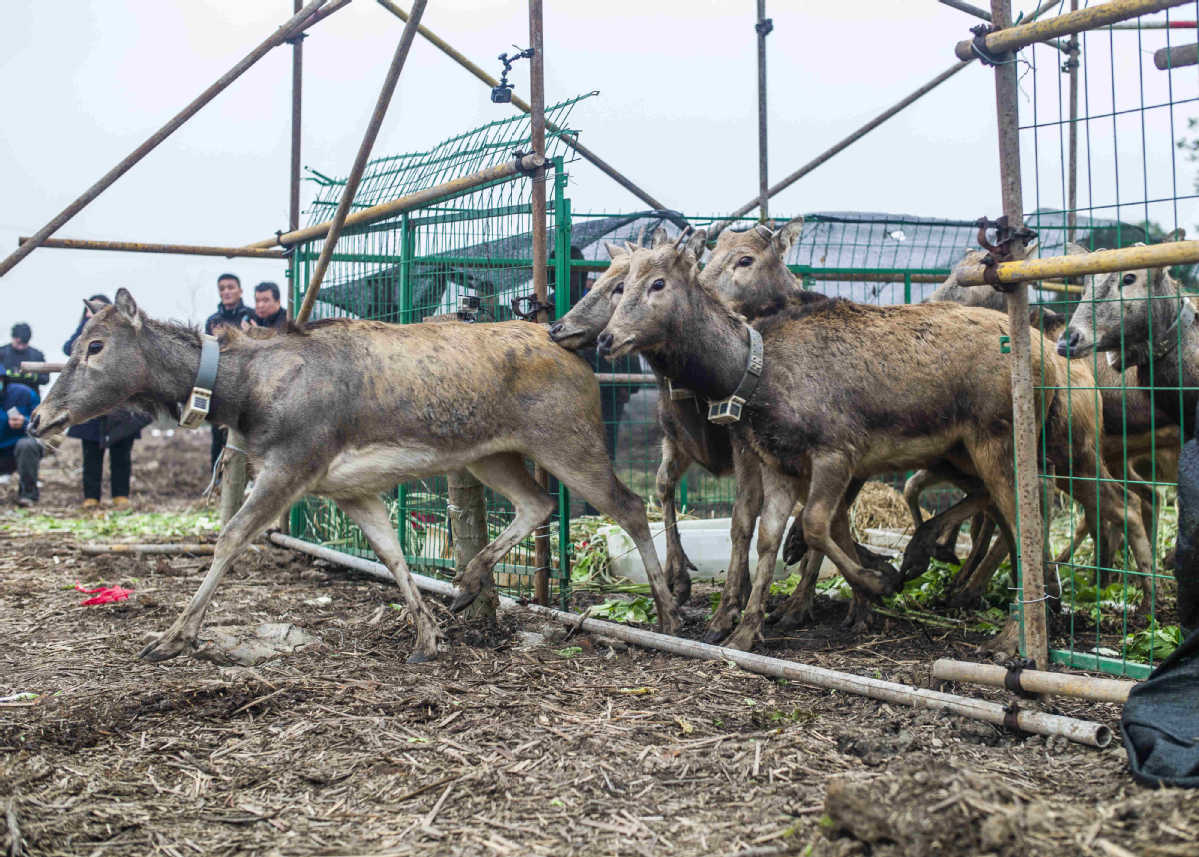Endangered deer enter the wild after long recovery period


A herd of milu, also known as Père David's deer, paces back and forth uneasily at the entrance of a shelter in Nanhaizi Milu Park, beyond the south-fifth ring road of Beijing.
After minutes of hesitation, the leading milu, puffing in trepidation, finally steps out and marches along a corridor set up by researchers at the Beijing Milu Ecological Research Center. It will lead them to a truck heading for East Dongting Lake National Nature Reserve, their new home.
In fact, the milu is a species of deer native to China. They once roamed on marshes and plains along the Yellow and Yangtze Rivers, but went extinct in the 1800s. The story of the species' survival is long and complicated.
The creature combines the features of a horse's face, a donkey's tail, cow's hooves and stag's antlers, often seen as auspicious signs in Chinese mythology.
Due to loss of habitat and human activities, their population dwindled to around 200 until the Qing Dynasty (1644-1911), with the last group on the planet being kept at Nanhaizi, then the royal hunting park.
A French missionary named Père David introduced this novel species to France in 1866. Later, a few more milu were transported to other European countries, while the rest were killed in the chaos of subsequent wars and natural disasters.
The scattered migrants, however, didn't live well in Europe. When British duke Herbrand Russell managed to pull 18 milu together and raised them at his Woburn Abbey in 1898, they finally got some breathing room.
Since its founding in 1985, Beijing Milu Ecological Research Center has endeavored to bring the milu back home. From 1985 to 1987, joint efforts brought 38 milu back to Nanhaizi Park.
In 1986, Milu Natural Reserve in Dafeng, Jiangsu province was founded, bringing another 39 milu from England. These 77 milu laid the foundation of the rejuvenation of the species in the country.
As the size of the milu group in China grew stronger, more nature reserves were established where traces of the deer have been found to keep them under protection.
























